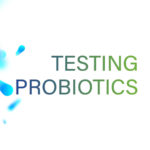Question: Can you test the potency of my multi-strain probiotic blend? Answer: Yes. And, while this is a commonly-asked question we find very easy to answer, the process for testing probiotic blends isn’t so simple.
Since testing probiotic blends is complicated, we recommend testing potency by plate count methods that report in Colony Forming Units or CFU/g. Labeling and testing in CFU/g, instead of mg or weight, is the best and most accurate way to verify the potency of probiotics. These methods account for the live bacteria in the product, which measuring by mg or weight does not. Labeling the product by weight will not ensure the specific attributes for the health benefit that is intended.
In early 2017, CRN and IPA released the Probiotics Best Practices Guidelines. These voluntary guidelines outline labeling, stability testing and storage recommendations for probiotic products. These best practices are intended to create consistency with products and transparency across the industry, and they also clearly recommend the CFU/g labeling for potency claims of probiotics.
It is commonly understood that testing probiotics is challenging. That is why we work with raw material manufacturers to be proficient with their methods for their specific probiotic strains. The Food Chemical Codex (FCC) has included some probiotic methods in their compendia, helping to improve method standardization. For a lab like ours, this means we are required to keep multiple medias and agars on hand for the samples sent to us for testing. And although so many different methods are requested, rest assured that we keep the lab supplied and ready for your samples!
Unfortunately, the methods for enumeration are developed for raw materials and are not usually designed for probiotic blends. Once the strains have been blended together, they become like scrambled eggs and cannot be enumerated separately. When running one CFU/g method for the blend, the goal is to show the full combined potency. When testing a blended product, we will look at it as a whole to determine which single method may be best to quantify multiple probiotics in the formula. Since each method uses a specific agar and media for best growth of that strain, not every strain may grow on every media. We also look at co-ingredients, such as botanicals or other non-probiotic ingredients, that could affect the testing and create an interference. Once we have completed the initial evaluation to determine the best method that can potentially enumerate the most strains, we can move forward with product testing. If interferences or testing issues arise, then additional method development work may be required.
Probiotics are usually very high-count materials, and this can be a concern in a clean microbiology lab environment. Precautions should be taken with lab design, sample segregation, extra cleaning and air handling to prevent possible cross-contamination with clean or bacteria-free samples housed in the lab.
It’s important to realize that not all labs are designed or are even able to perform these complex methods—choose your testing lab carefully. SORA Labs is highly experienced and can provide accurate testing for all your probiotic products. Make the obvious choice today!










